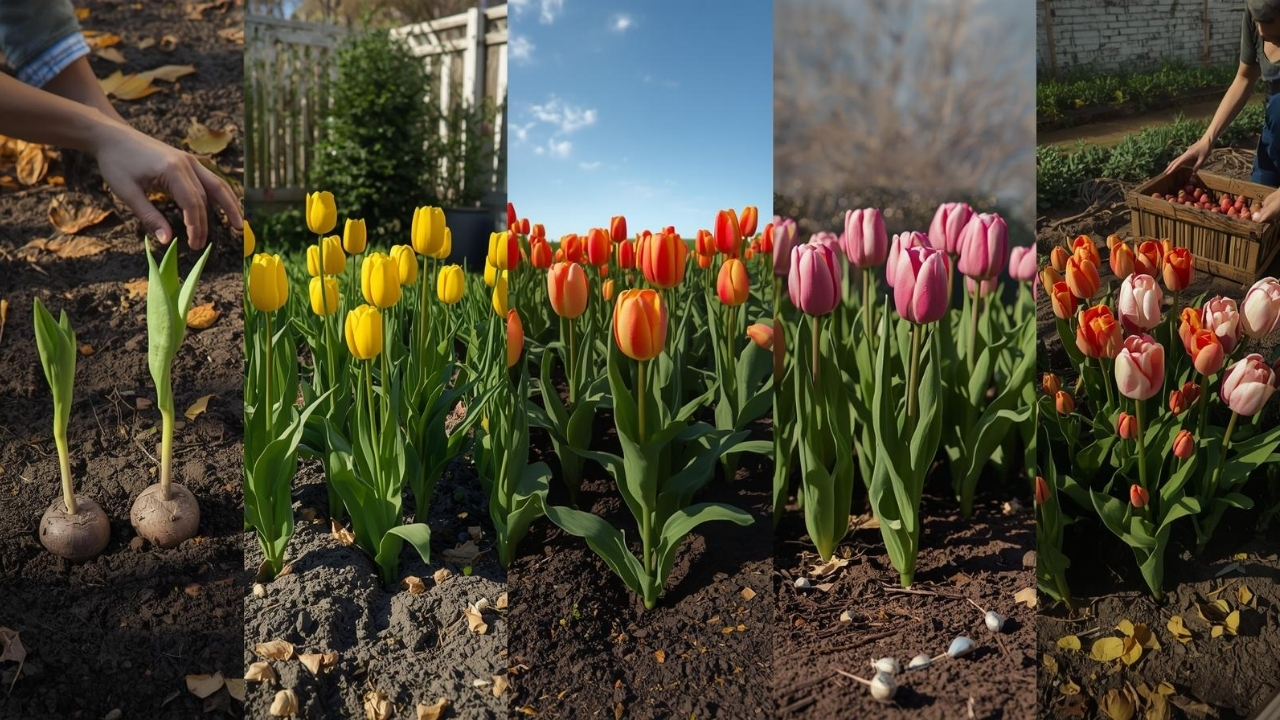Join on WhatsApp
Get the latest updates directly on WhatsApp – motivation, news & more!
Tulips are among the most iconic spring flowers, known for their vibrant colors, elegant shapes, and ability to transform any garden into a cheerful paradise. Native to Central Asia and popularized in Europe during the 17th century, tulips have become a symbol of renewal and beauty. Whether you’re a seasoned gardener or a curious beginner, growing tulips can be a rewarding experience that brings joy year after year. This guide walks you through everything you need to know to grow healthy, blooming tulips-from choosing bulbs to post-bloom care.
Choosing the Right Tulip Bulbs
The success of your tulip garden begins with selecting high-quality bulbs. Look for firm, plump bulbs without mold or soft spots. Larger bulbs generally produce stronger stems and bigger blooms. Tulips come in various types, including early bloomers like Single Early and Double Early, mid-season varieties such as Triumph and Darwin Hybrid, and late bloomers like Parrot and Fringed tulips. Consider mixing different types to extend your blooming season and create visual interest. Also, choose colors that complement your garden’s palette-classic reds and yellows, soft pastels, or even dramatic purples and blacks.
Ideal Planting Time and Location
Tulips are planted in the fall, typically between October and December, before the ground freezes. This allows the bulbs to establish roots during the cold months and bloom in spring. Choose a location that receives full sun for at least six hours a day. Tulips prefer well-drained soil, so avoid areas where water tends to pool. If your soil is heavy clay, consider amending it with sand or compost to improve drainage. Raised beds or containers can also be excellent options for better control over soil conditions.
Preparing the Soil
Before planting, prepare the soil by loosening it to a depth of about 12 inches. Remove any weeds, rocks, or debris. Mix in organic compost to enrich the soil and promote healthy root development. Tulips thrive in slightly acidic to neutral pH levels, ideally between 6.0 and 7.0. You can test your soil using a simple pH kit and adjust accordingly with lime or sulfur if needed. Good soil preparation sets the foundation for strong growth and vibrant blooms.
Planting Tulip Bulbs
Plant tulip bulbs about 6 to 8 inches deep, with the pointed end facing upward. Space them 4 to 6 inches apart to allow room for growth and airflow. For a natural look, avoid planting in straight rows-scatter the bulbs randomly or cluster them in groups of five to seven. Water the bulbs thoroughly after planting to help settle the soil and initiate root growth. Once planted, tulips require minimal attention until spring.
Caring for Tulips During Growth
As tulips begin to emerge in early spring, keep an eye on moisture levels. While they don’t need frequent watering, ensure the soil doesn’t dry out completely. Avoid overhead watering, which can lead to fungal issues. Fertilize with a balanced, slow-release bulb food when shoots appear, and again after blooming to support next year’s growth. Remove weeds regularly to reduce competition and keep the area tidy. If pests like aphids or slugs appear, treat them promptly using organic or chemical controls depending on your preference.
Supporting Healthy Blooms
Tulips are relatively low-maintenance, but a few extra steps can enhance their performance. Protect them from strong winds by planting near fences or shrubs. If you live in an area with heavy rainfall, consider staking taller varieties to prevent bending. Deadhead spent flowers to redirect energy back to the bulb rather than seed production. However, leave the foliage intact until it turns yellow and dies back naturally-this process nourishes the bulb for the next season.
Post-Bloom Care and Storage
Once the foliage has died back, you can choose to leave the bulbs in the ground or dig them up for storage. In warmer climates, tulips may not perform well in subsequent years if left in place, so lifting and storing is recommended. Gently dig up the bulbs, brush off excess soil, and let them dry in a cool, shaded area. Store them in mesh bags or paper sacks in a dry, ventilated space until fall. Label your bulbs by variety and color to make replanting easier.
Common Problems and Solutions
Tulips can face challenges like poor blooming, fungal diseases, or animal damage. If your tulips fail to bloom, it could be due to shallow planting, overcrowding, or insufficient chilling. Ensure bulbs are planted deep enough and spaced properly. For fungal issues like botrytis or bulb rot, improve drainage and avoid overwatering. Rodents and deer may dig up or eat bulbs-use wire mesh, repellents, or plant tulips in containers to deter them. Regular monitoring and timely intervention can keep your tulips healthy and thriving.
Conclusion
Growing tulips is a joyful journey that combines patience, planning, and a touch of creativity. With the right bulbs, soil, and care, you can enjoy a stunning display of color each spring. Whether you’re planting a small patch or designing a large tulip bed, the process is both therapeutic and visually rewarding. Embrace the seasonal rhythm, experiment with varieties, and let tulips bring a burst of life to your garden year after year.
